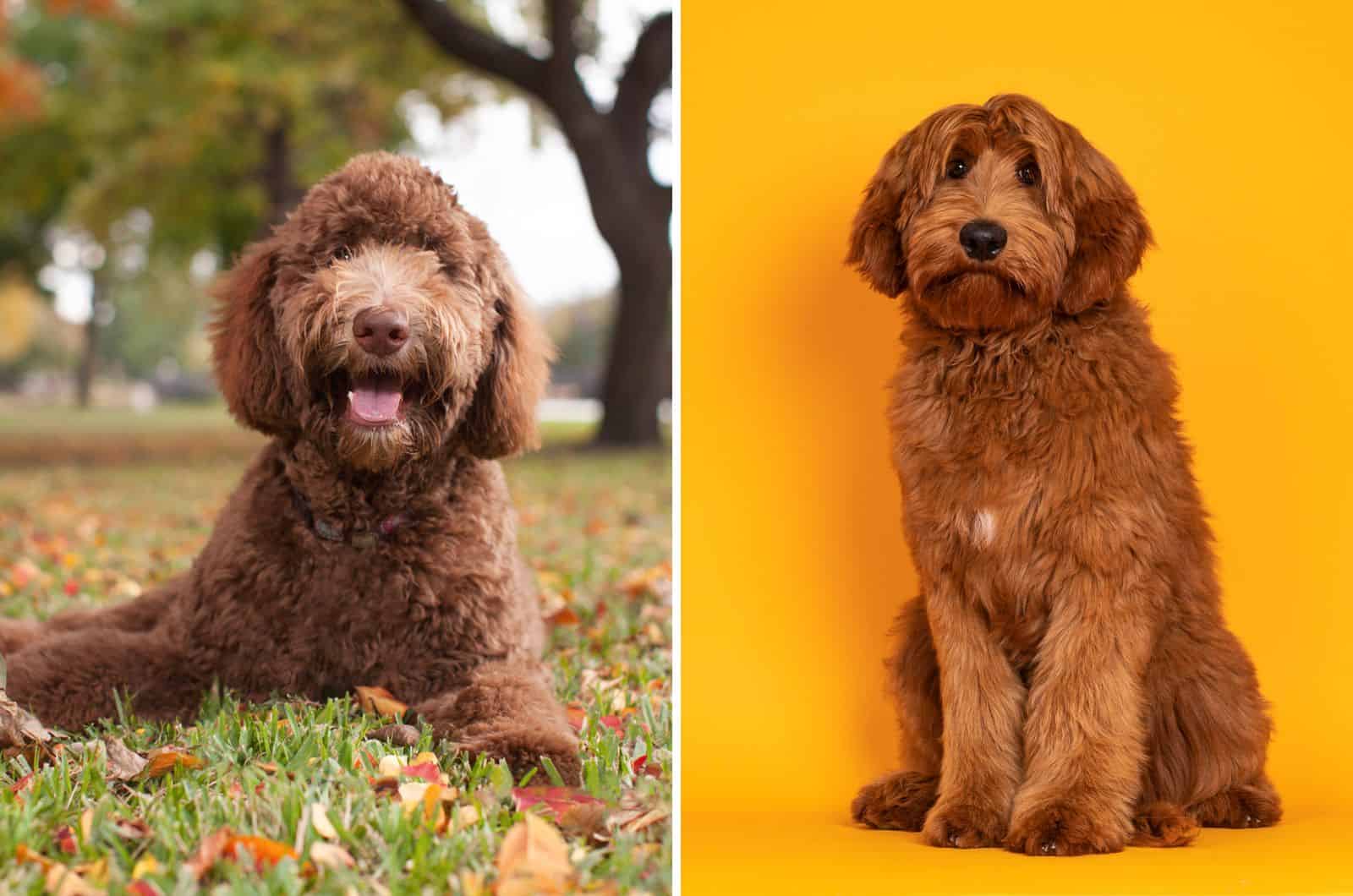Photos can be deceiving. Imagine a family photo where you and your cousins and siblings are sitting next to you.
Enter grandma with glasses as thick as a jar bottom. She compliments your beautiful hair. You tell her that you thought it was terrible, only to realize she mistook you for your sibling.
The same thing is very common with Cobberdog vs Labradoodle. You see some doodly, lab-looking, mayhem making dog and you conclude it is a Labradoodle. And the answer is incorrect! It was me all along, the Cobberdog laughed villainously.
What Is The Difference Between An Australian Cobberdog VS Labradoodle?
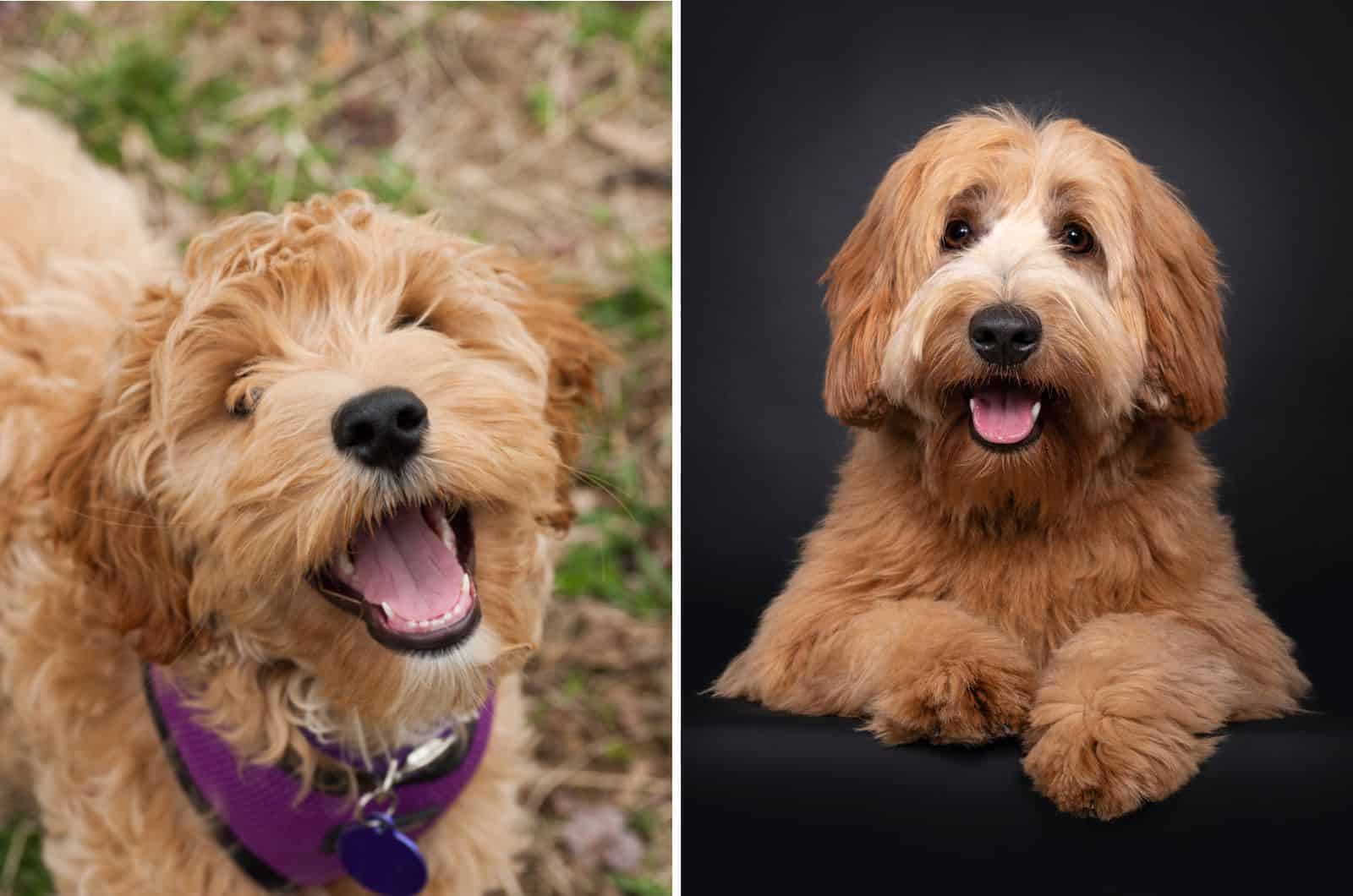
Researching these two dog breeds can be quite confusing and frustrating. They look similar and have a shared lineage but differ in certain physical characteristics. The biggest difference, however, is in the temper of the Cobberdog vs Labradoodle.
To put all the question marks in your head to rest, we will need to see why the two breeds resemble each other so much that they can be easily mistaken for one another. Starting with the basics, let us talk about the shared genetics.
What Breeds Make An Australian Cobberdog?
A Labrador retriever and Poodle mix, obviously, produces a Labradoodle. Australian breeders made it their mission to create a new purebred dog — the Australian Labradoodle.
If you thought to yourself: So, a Cobberdog is a Labradoodle from Australia, I can confirm you are onto something there.
The plot thickens though. The Australian Cobberdog was bred only within its own mix to produce incrementally purer versions to which other dog breed DNA was later added.
Every new litter that the Australian breeders produced had more defined Cobberdog features.
So, it is a “purified” Australian Labradoodle with selective DNA from other breeds, initially bred only in Australia, and not recognized by the American Kennel Club. Once again, there is more to the story.
Wally Conron, the engineering mind behind the Australian Labradoodle, decided that his perfect dog needed more features that the default mix did not provide. This is why, officially, there are six dog breeds that comprise the Australian Labradoodle.
The Poodle, Labrador retriever, Irish Water Spaniel, Curly Coat Retriever, American Cocker Spaniel and the English Cocker Spaniel are all part of the Australian Labradoodle breed.
The Australian Labradoodle Association Europe claims that the capital difference between the Australian Cobberdog and the Australian Labradoodle is the infusion of the Wheaten Terrier.
In 2012, the Australian Cobberdog was officially admitted into the Master Dog Breeders And Associates (MDBA) as a fully fledged breed in development. To summarize, the Australian Cobberdog is now a breed of its own but its “ancestor” was the jam packed Australian Labradoodle bloodline.
Cobberdog Guise
Let me start off by telling you a fun fact about the Australian Cobberdog: the males and females have no measurable size difference. I know, right? Incredible accomplishment by the Aussie breeders.
Since the Poodle relative can be toy, miniature or a standard poodle, the size will vary according to which type of Poodle was part of the mix. In terms of height, the standard Cobberdog can grow anywhere from twenty two to twenty four inches tall.
Females are a bit lighter in the weight department ranging from forty five to sixty pounds. The more muscular male can weigh up to seventy seven pounds. Miniature Cobbers are sixteen to eighteen inches tall and twenty five to thirty five pounds heavy.
The body frame is more athletic than square with a narrow chest and long legs. The back is slightly curved and ends in a long tail that is densely coated.
Thankfully, the ears are floppy and have the shape of a rounded triangle. At least something was retained from the Labrador.
Coat Quality And Grooming
Combining the Poodle’s curly coat with the Lab’s smooth short coat results in a coat type known as fleece coat. There can be variations in coat quality, but the Poodle dominates this genetic characteristic.
The facial hair is less pronounced in a Cobberdog puppy. The coat might even look as though in poor condition but that is the price you pay to get an amazing coat once an adult.
Grooming needs are moderate, and you should use a smoother brush every other week. The coat grows fairly quickly, so the scissors or trimmer will have to come out of the drawer every three months.
If you shorten the coat, it will regrow to look exactly the same as before. In breeds such as the Poodle or Terrier, cutting the hair will gradually worsen the natural shape and quality of the coat.
The coat is non-shedding which means the vacuum will not fill up as fast as with some other breeds.
For people who are allergic to the shedding coat, this means the Cobber is allergy friendly. The lifespan of the Cobberdog is impressive too — thirteen to fifteen years.
Coat Colors
Cobberdogs have two main colors: black and rose. While there are claims that the dilute color Cobberdog breeders call rose is a pigment and not the absence of it, I would take it with a pinch of salt.
Saying that a dilute is not indicative of pigment absence can be misleading, as the two can often be completely unrelated. Anyhow, here is the abundance of colors in Australian Cobberdogs.
There are plenty of standard colors to choose from though: black, raven, brown, cafe, white, parchment, blond, red, gold, rose white, rose blonde and rose red.
But that is not all! If you call now, the breeder can offer you some crazy patterns too such as merle or parti. The merle variations come in two shades — blue and chocolate. Parti Cobberdogs can be any of the solids as long as the complimentary color is white.
The Cobberdog pure breed standards see multi-colored dogs as not desirable. Examples would be agouti or phantom, which are often present in Labradoodles.
Bred With Purpose
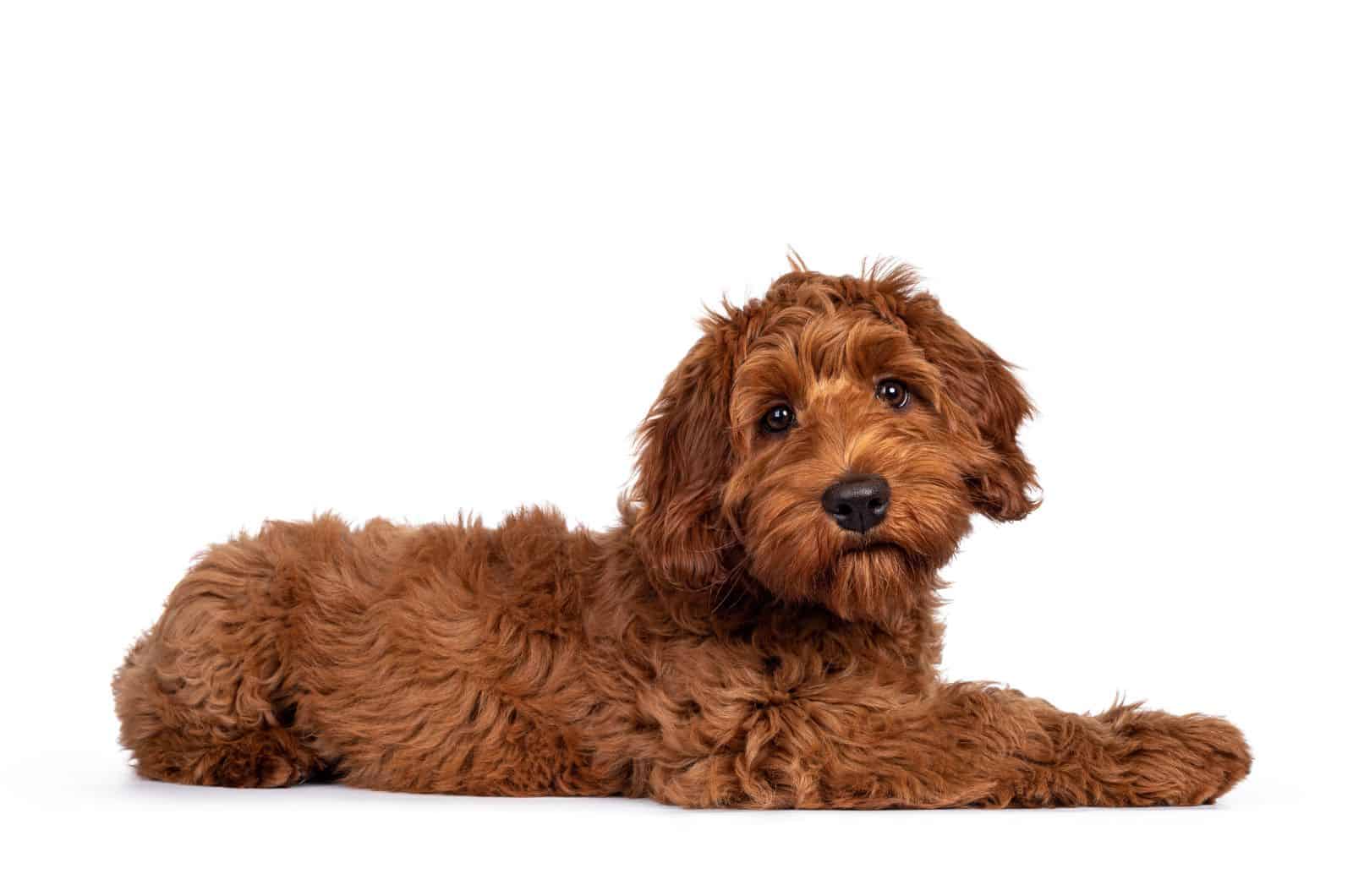
Plenty of the already mentioned features were inserted into the genetics of the Cobber for a purpose. The breed’s inception had a very important motivation — creating the best therapy dog and medical alert & assistance dog.
The creators of the Cobber had allergies in mind when developing the plan for breeding with the other six breeds’ traits. The best of all worlds in one dog with a valuable role was a dream come true.
Undoubtedly, fine tuning the Cobberdog’s temperament was the main goal. Considering the Labrador retriever’s overzealous temperament, the Australian breeders created a breed with the same drive to please but in a less energetic package.
As service dogs, they needed to be highly trainable and intuitive. This new breed had its work cut out for itself. Let me tell you, the Cobber did not miss the mark. They respond incredibly well to dog training and are exceptional family dogs.
Their calmness and sensibility gives them the upper edge over other guide dogs which makes them the favorites for this job.
The definition of pure breed has been challenged with the birth of a new breed standard for the Australian Cobberdog breed.
They are still “labish” in their exercise needs, but the requirements are not as high. Long walks will do the trick which is perfect for people who have difficulty moving.
Breeding dogs with sometimes contrasting traits like the Poodle and Labrador retriever does not always have to end in disaster. The Cobberdog is a living example of this.
Adaptability And Social Skills
These dogs are insanely good at adapting to different lifestyles. Being primarily bred to be service dogs, the very carefully planned breeding programs produced one of, if not the best therapy and assistance dogs in the world.
Living in an apartment will be no problem for the Cobberdog since it requires less exercise than other breeds that are in the same line of work. This does not mean it will dislike living in houses where there are large yards or the great outdoors.
It is well tuned for life with other pets (including dogs) and is gentle and patient with small children. So, getting this dog is a brilliant idea even if it will “just” be a family dog.
Although it is very attentive and intuitive, strangers are welcome in the Cobber’s book. Their spirited approach to everything and everyone is very controlled.
Why Is It Called A Cobberdog?
Wholesome story time. The original inspiration for creating the Australian Cobberdog is tightly connected to the etymology of the word “cobber”.
Linguists believe that the word was introduced by the Yiddish speaking community in London’s East End. While migrating to Australia, they carried over a piece of their dialect and instilled it into the Australian slang.
Cobber means “mate” or “friend”. It is somewhat of a mixture of both, as it sits midway through the two words’ semantics. So, the literal translation would be Friend-dog but the Cobberdog community prefers Dog-friend. Indeed, they are the best of friends.
How Much Does A Cobberdog Cost?
They will be your friend, but not before the breeders strangle your wallet. The price is steep and ranges from $3000 to $5000. Two main factors dictate the price: breeder choice and location, rarity of the Cobberdog’s coat color.
White, cafe and red rose are the rarest Cobberdog coat colors and will probably cost you an additional $1000.
Common Health Problems In Australian Cobberdogs
Obligatory and thorough health screens dating generations back yielded great results in overall health of the breed.
This dog breed has a significantly higher chance to suffer from Addison’s disease. Yearly check-ups at the vet and running tests for this condition are mandatory.
Other possible conditions include progressive retinal atrophy, degenerative myelopathy, hip dysplasia, patellar luxation and von Willebrand’s.
What Is A Labradoodle?
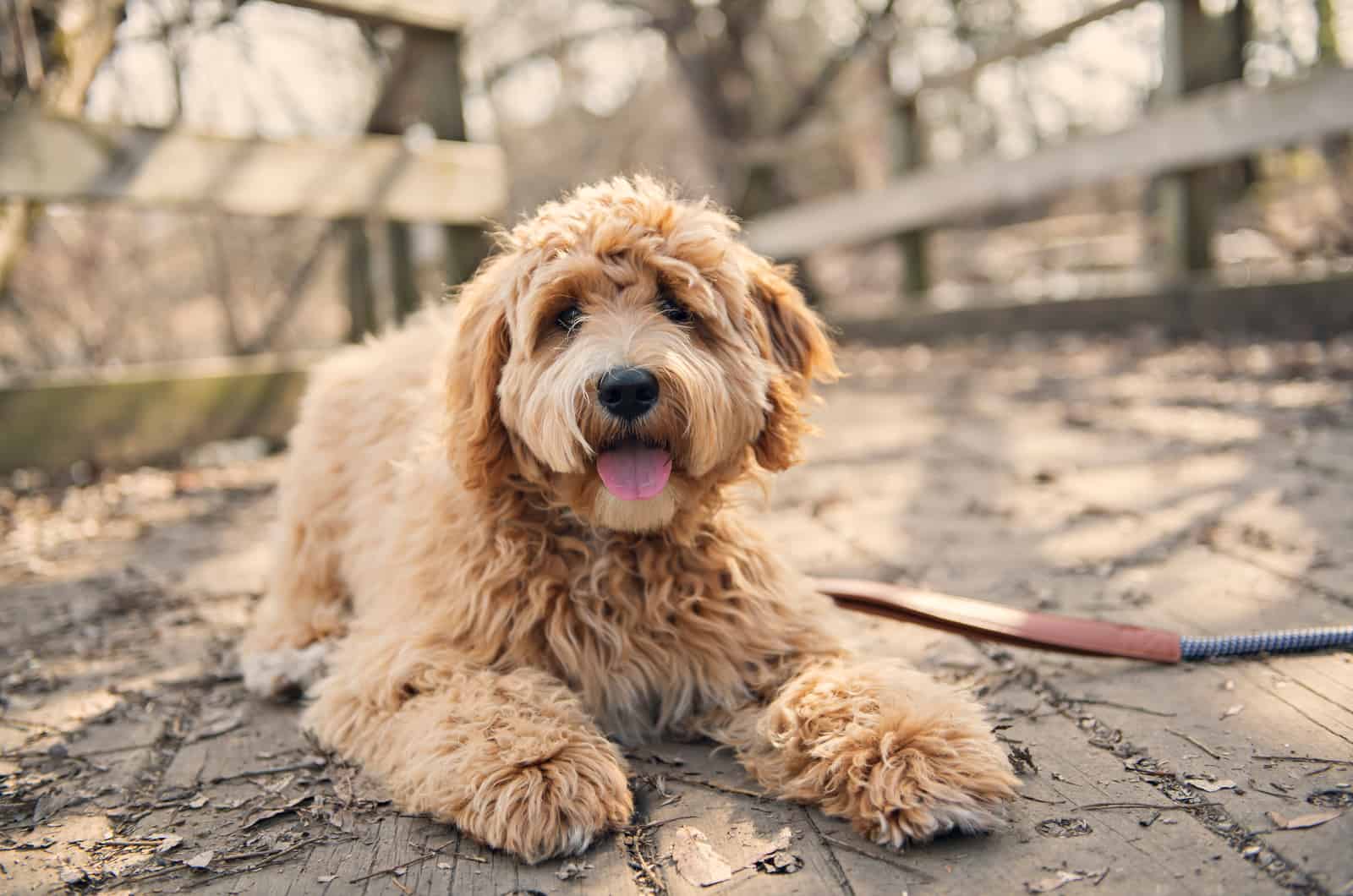
A Labradoodle is a beautiful hyperactive crossbreed. Labradoodle breeders will tell you that the Cobberdog is a Labradoodle rip-off, and Cobberdog breeders will say that Labradoodle breeders only chose its parent breeds for the combined look.
To be honest, I do not care who did what first as long as the dog is as good a companion as a Labradoodle dog. The Labradoodle is produced by mixing a Labrador retriever and a Poodle.
Over the years, other breeds were added to certain bloodlines to enrich the already well rounded genetic combo.
American Labradoodle, Australian Labradoodle From America And The Australian Labradoodle
For my next magic trick, I will raise your confusion level by 100! Labradoodles can belong to one of three types: American Labradoodle, Australian Labradoodle and Australian Labradoodle bred in America.
The Labradoodle Association of Australia and the International Australian Labradoodle Association have been at work developing the Australian Labradoodle as a pure breed for a while now. The FCI does not recognize them as such yet.
Australian Labradoodles bred in America are considered a multi-generational crossbreed that can have DNA from other breeds. Labradoodle puppies that come from these multi-gen parents are hybrids.
Lastly, the American Labradoodle is considered to be an appearance-oriented Lab and Poodle mix. This variant is not even trying to push towards purifying the breed and, eventually, earning it a pure breed status.
Neither the American Kennel Club or the FCI recognize these three types of Labradoodle.
(Un)mistakable Looks Of An Australian Labradoodle
https://www.youtube.com/watch?v=WFWL_LU6XBE
Just like the Cobberdog, the Australian Labradoodle can be mixed with toy, miniature or standard sized Poodles.
The standard size reaches heights that can range from twenty two to twenty four inches with an average weight of fifty five to seventy seven pounds. Females are slightly lighter.
The miniature version’s height is between seventeen and twenty two inches. They do not weigh more than thirty to fifty pounds. Life expectancy is twelve to fifteen years.
Traits in Labradoodles can differ greatly. First generation Labradoodles are known to have unpredictable physical features. This is why general descriptions never quite work with them.
However, here is a best case scenario where the certainty of select physical features is high.
Any Labradoodle that has been bred within its own hybrid breed scope will retain most of the original traits. The silhouette is quite similar to the Cobberdogs, and the main differentiator here, other than the genetic mix, is the coat.
Australian Labradoodles can feature two coat types : fleece and wool. The first one, predictably, feels like fleece and can come in two different forms — straight or wavy. Fleece-like Aussie Labradoodles are usually soft coated.
A third variant of fleece coat is also possible but quite rare, and it includes the hairs to form spiral curls. Pro tip: the straight-haired Labradoodle is kind of a Goldendoodle.
The wooly coat is exactly what the name implies — crimped and curly. If you lose your wooly Labradoodle among sheep, you will have a bad time. Just saying. The grooming needs are moderate but you will need to dedicate a couple of hours when doing it.
The “hypoallergenic coat” is present in all Labradoodles regardless of type, but I advise reading this article on the truth about hypoallergenic coats in Poodle mixes.
Australian Labradoodle Coat Colors
In terms of coat color, the Australian Labradoodle can inherit any coat color passed on by the many dog breeds it includes.
Some of the colors are more common than others, but the ones you will most frequently see on an Australian Labradoodle are: black, white, red, caramel, apricot and parti. Parti Labradoodles must always have white in a combination with one of the base colors.
The American Labradoodle Multi-Generation Business Explained
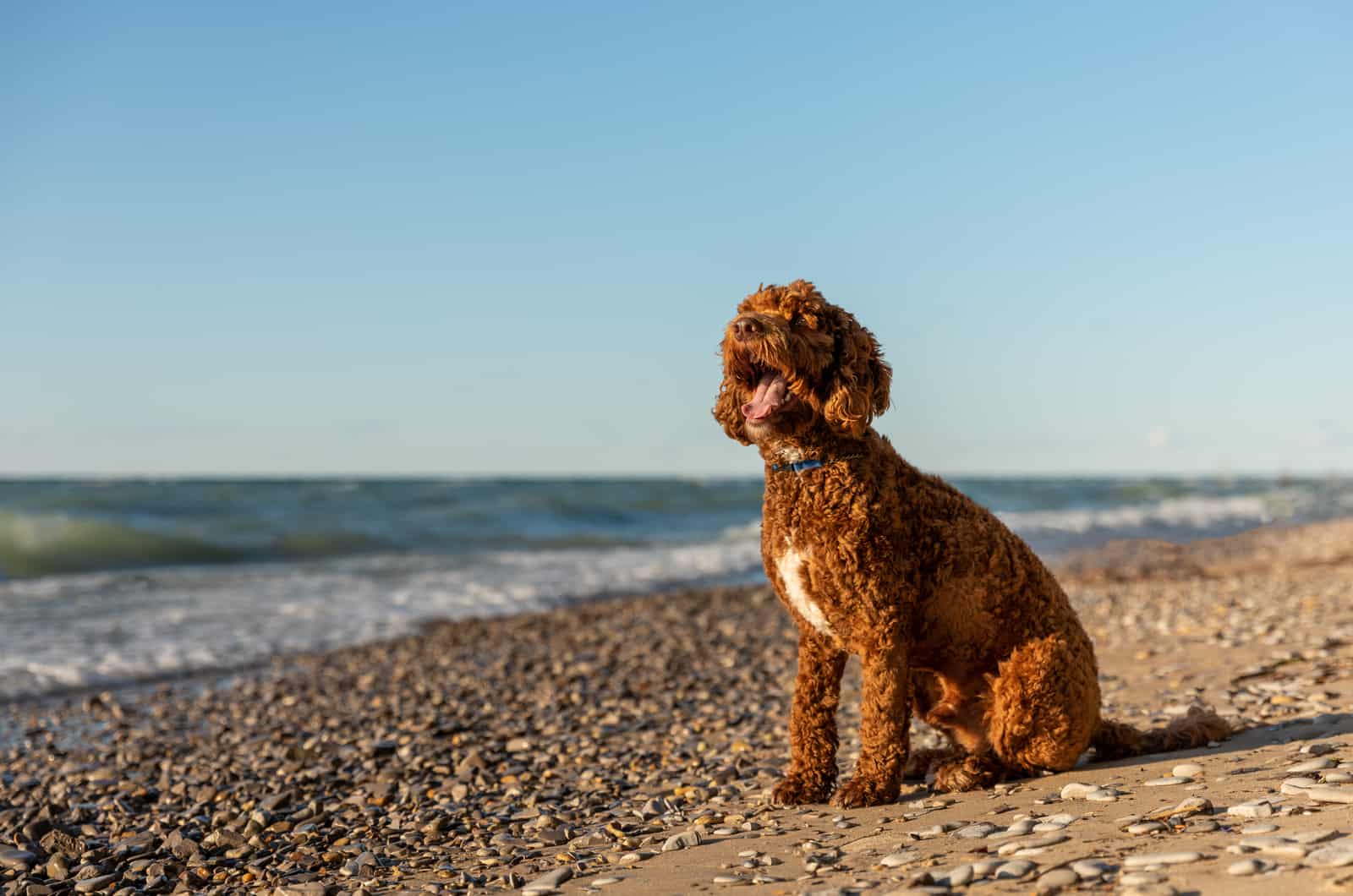
American Labradoodles can have different genetic ratio percentages of the breeds used in the combination. Depending on the predominant breed percentage a puppy can be more similar to a Labrador retriever, Cocker Spaniel or a Poodle.
The designated letter for marking the generation is F. So, an F1 would be the first generation that has 50% Labrador retriever and 50% Poodle in the mix. The offspring are generally healthier than successive generations.
Though the dog is healthy, people with allergies will not have a great time since they have a high shedding potential. Coat can be smooth, wavy or wiry.
An F1-B (feels like I am classifying tornadoes) is the most allergy-friendly combination out of all these. The ratio of DNA is 25% Lab and 75% Poodle.
Essentially, a Poodle + F1 Labradoodle = F1-B. The coat quality is pretty predictable as the Poodle genes will overtake the coat creation.
If you cross two F1 Labradoodles, you get an F2. This levels out the Poodle to Lab ratio back to the F1. This time, however, certain traits like the coat might be more predictable than others. An F3 would be two F2s crossed.
Finally, multi-generation Labradoodles can be F3 at the least but are, most frequently, much deeper in terms of selective breeding. Australian Labradoodles belong to this category.
Good Dog Reputation Gone Bad
We already touched on the Cobberdog vs Labradoodle temperament but let me elaborate a bit more.
Thanks to the generational classification from the last few paragraphs, we can now comprehend the temperament difference. The Labradoodle in general (not just the American) is a more feisty and playful breed than the Cobberdog.
Not only will they require more exercise, you will also need to put in more effort in getting them to focus. Thank the Labrador retriever for this trait. They still make great service dogs, but the Cobberdog takes the crown on this one.
In terms of adaptability to apartment living, they will require at least a small yard. Exercise needs do not necessarily have to mean longevity. Intensity is much more important.
Will to please is extraordinary, though a little too in your face. The Labradoodle just wants its owner to be content. You can get a Labradoodle that has more Poodle stubbornness in it too. You can consider yourself lucky if that happens.
Family is held in high regard and Labradoodles spread love in abundance. A lot of it usually spills over to the guests, so warn your friends when the “love spreader” is off-leash.
Training is crucial when the Labradoodle is a puppy. Learning proper socialization skills can be combined with obedience training to have a well-rounded adult dog. Too little obedience and socialization can become a serious problem once they grow up.
Labradoodle Health Problems
The same conditions that appear in the Cobberdog are present in Labradoodles too. However, since there is no breed standard for the American Labradoodle, and the variations and breed combinations are virtually endless, health is good overall.
The Australian Labradoodle is considered a pure breed by the MDBA, so naturally it has been inbred to an extent. Inbreeding increases the chances of a puppy having congenital conditions that established themselves in the parent breeds.
Labradoodle Cost
Size matters with Labradoodles. The smaller they are, the emptier your bank account becomes. Standard sized, and more common, Labradoodles cost anywhere between $1800 and $3000.
For the miniature version, you will pay around $3000. Keep in mind that color and breeder reputation play a major role in the price. Do not be surprised if you see prices well above $3000.
Australian Cobberdog And Labradoodle Breeder Choice
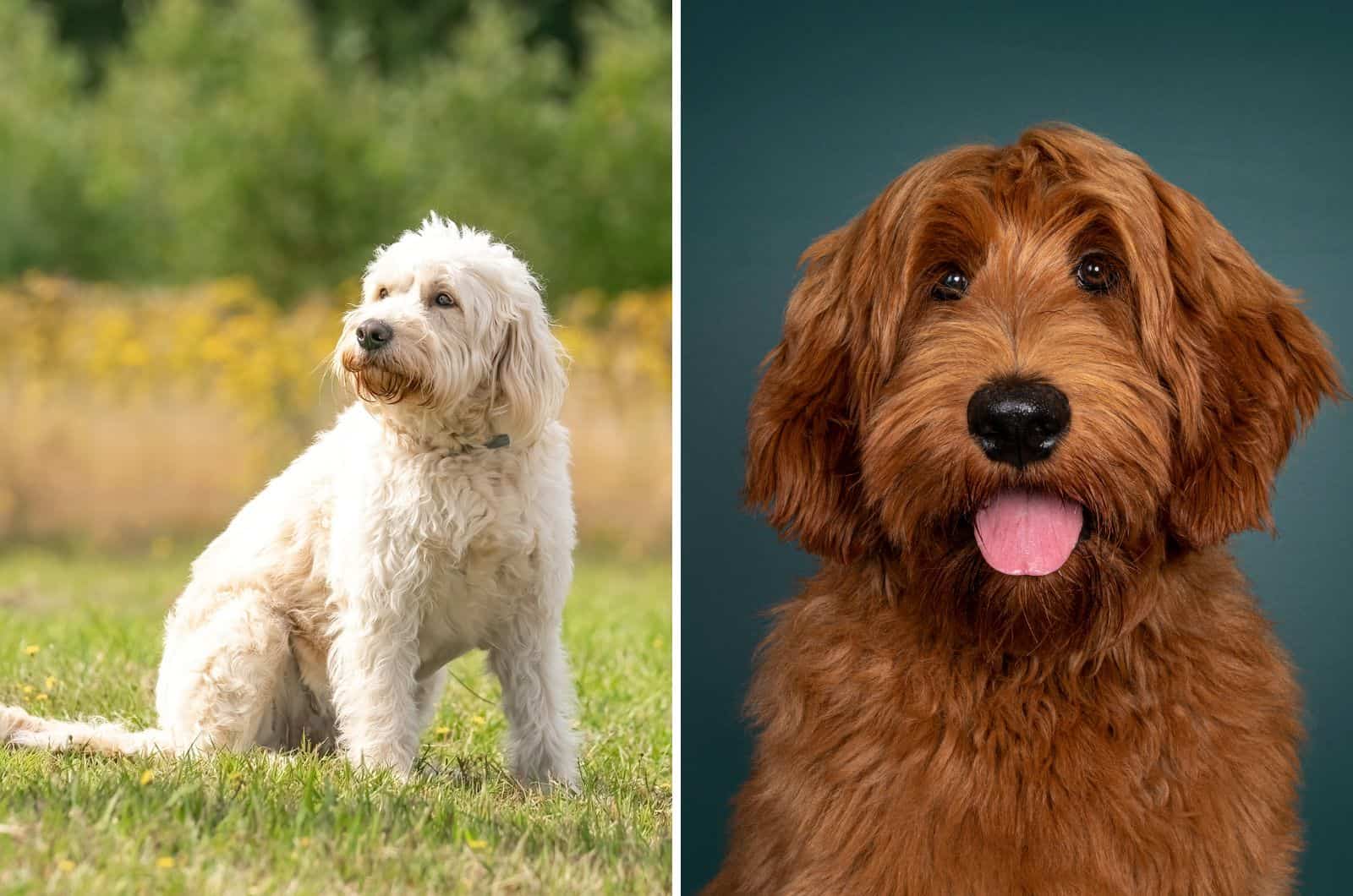
Technically, the Cobberdog is not recognized by the Fédération Cynologique Internationale (FCI), and the only organization that considers it purebred is the MDBA. This is why breeder choice is the first and most important choice.
Most of them who claim to have Australian Cobberdog puppies for sale should have no problem providing you with DNA tests that prove the authenticity of the MDBA approved Cobber.
A good reference and certified Cobberdog breeder would be Tegan’s Australian Cobberdog. The owner is the founder of the original Australian Labradoodle and co-founder and active developer of the Cobberdog breed.
With American Labradoodles you will need some luck finding the right one. Since they are considered hybrids,
Ending On A Cobberly Note
With all that said, we have arrived at the conclusion. If you liked what you read about either of these breeds, you are probably opening a new tab to look for breeders.
Be very wary of breeders who do not provide DNA tests as proof of authenticity. This is valid for Cobberdogs.
In case you are in the Labradoodle camp, you will have many options to choose from. Ratios, coat types, colors, mini, standard and god knows what else. Avoid puppy mills or any place that has a ton of breeds in a residential area.
Final score: Australian Cobberdog vs Labradoodle — you decide who won.
